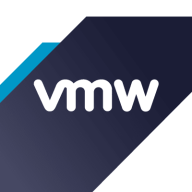

Splunk Observability Cloud and VMware Tanzu Observability are competitors in the observability solutions sector. Splunk appears to have an edge in real-time monitoring and analytics, while VMware Tanzu is more suited for enterprise environments with its advanced DevOps integration.
Features: Splunk Observability Cloud provides robust real-time monitoring, custom dashboards, and comprehensive data analytics. VMware Tanzu Observability offers features tailored for complete DevOps lifecycle integration, extensive visibility, and granular control over application performance with a focus on deeper DevOps processes.
Ease of Deployment and Customer Service: Splunk Observability Cloud is known for a straightforward deployment process and responsive customer support. VMware Tanzu Observability, though potentially more intricate in deployment due to its broad capabilities, is backed by comprehensive support services ideal for complex integrations.
Pricing and ROI: Splunk Observability Cloud is competitively priced, making it a cost-effective choice for mid-sized enterprises with reasonable initial setup costs and favorable ROI. VMware Tanzu Observability, while often incurring higher initial costs, offers significant ROI through its advanced features, particularly for larger enterprises with substantial DevOps integration needs.

Splunk Observability Cloud offers sophisticated log searching, data integration, and customizable dashboards. With rapid deployment and ease of use, this cloud service enhances monitoring capabilities across IT infrastructures for comprehensive end-to-end visibility.
Focused on enhancing performance management and security, Splunk Observability Cloud supports environments through its data visualization and analysis tools. Users appreciate its robust application performance monitoring and troubleshooting insights. However, improvements in integrations, interface customization, scalability, and automation are needed. Users find value in its capabilities for infrastructure and network monitoring, as well as log analytics, albeit cost considerations and better documentation are desired. Enhancements in real-time monitoring and network protection are also noted as areas for development.
What are the key features?In industries, Splunk Observability Cloud is implemented for security management by analyzing logs from detection systems, offering real-time alerts and troubleshooting for cloud-native applications. It is leveraged for machine data analysis, improving infrastructure visibility and supporting network and application performance management efforts.
VMware Tanzu Observability provides real-time monitoring and analytics for cloud-native environments, enhancing visibility and operational efficiency for robust application performance management.
VMware Tanzu Observability is designed to deliver comprehensive insights into application metrics and data across distributed systems. Its capabilities allow businesses to effectively monitor, troubleshoot, and optimize application performance, ensuring reliability and scaling in cloud-native architectures. By leveraging advanced analytics, VMware Tanzu Observability empowers enterprises to proactively manage application infrastructure and services, enabling a seamless monitoring experience that aligns with industry demands for agility and speed.
What are the key features of VMware Tanzu Observability?Industries such as finance, healthcare, and e-commerce implement VMware Tanzu Observability to meet specific requirements for high availability and performance. In finance, it supports transaction monitoring while in healthcare, it ensures application reliability crucial for patient data management. E-commerce platforms use it to maintain seamless shopping experiences, underpinning high-performance demands throughout peak traffic periods.
We monitor all Cloud Monitoring Software reviews to prevent fraudulent reviews and keep review quality high. We do not post reviews by company employees or direct competitors. We validate each review for authenticity via cross-reference with LinkedIn, and personal follow-up with the reviewer when necessary.